This article was medically reviewed by Luba Lee, FNP-BC, MS. Luba Lee, FNP-BC is a Board-Certified Family Nurse Practitioner (FNP) and educator in Tennessee with over a decade of clinical experience. Luba has certifications in Pediatric Advanced Life Support (PALS), Emergency Medicine, Advanced Cardiac Life Support (ACLS), Team Building, and Critical Care Nursing. She received her Master of Science in Nursing (MSN) from the University of Tennessee in 2006.
There are 8 references cited in this article, which can be found at the bottom of the page.
This article has been viewed 38,938 times.
An injured or sprained ankle can be quite painful and may lay you up for a few days. In most ankle injuries, the tendons and the ligaments in the ankle are strained or stretched. The blood vessels that supply blood and oxygen to your feet are also often torn and leak blood into the surrounding tissues, which causes the ankle and foot to bruise. Fortunately, though, most ankle injuries aren't serious and heal themselves after a few days of at-home treatment. Most minor ankle injuries can be treated at home with the use of rest, ice, and elevation to limit any swelling.[1]
Steps
Treating the Ankle
-
1Rest the injured ankle as much as possible for 48 hours. After you sprain or injure your ankle, it's important that you rest the ankle to avoid worsening the injury. Stay seated or lay down as much as possible with your ankle elevated. If you must walk, walk slowly, and use a crutch to take some of the weight off of your injured ankle. If this is too painful, try applying a brace to the injured ankle so you can still get around.[2]
- It's okay to still be somewhat active during the first 48 hours. In fact, mild activity (e.g., walking with a crutch) can help keep the muscles in your injured ankle strong.
- You can purchase a brace at a medical-supply shop. Ankle braces may also be sold at large pharmacies or drugstores.
-
2Place an ice pack on the injured ankle for 15–20 minutes. If you don't have an ice pack handy, try wetting a washcloth and wrapping it around 6–7 ice cubes, or use a bag of frozen vegetables as an ice pack. Opt for something with small pieces, such as frozen peas or corn. Then apply the ice pack to the ankle. Hold the ice lightly against the injured ankle so that it cools down the skin but doesn't cause pain.[3]
- Applying an ice pack to the injured ankle will cause the blood vessels to constrict and to limit blood flow to the injured area, which minimizes swelling.
- Applying ice to the injured ankle has the added benefit of providing pain relief by numbing the nerve endings in the area.
- You can buy gel ice packs at a pharmacy or drugstore.
Advertisement -
3Apply ice 4–8 times daily for the first 48 hours following the injury. During the first 48 hours, the injured ankle will be swollen and may be quite painful, so the ice will help to lessen this swelling. As with the initial icing, keep the ice pack on the ankle for 15–20 minutes each time. Ice the ankle whenever it feels painful or starts to swell up, or whenever you have time in your schedule to apply ice.[4]
- Holding the ice pack against the injured ankle for more than 20 minutes could cause frostbite or damage the skin.
-
4Compress the injured ankle for 48 hours to prevent swelling. The best way to compress your ankle is to slide your foot inside of an elastic or neoprene compression sock (or a compression sleeve that fits around your ankle). A compression sock will put even pressure on your ankle and prevent it from swelling up after the injury. If you don't have access to a compression sock, you can use an elastic wrap or bandage instead.[5]
- You can buy a compression sleeve or sock at most pharmacies and drugstores. They'll also be available at most sports-supply shops and even at some large supermarkets.
-
5Elevate the injured ankle above your heart to decrease any swelling. When you're at home during the first 48 hours after injuring your ankle, spend as much time as possible lying down or sitting with the injured ankle elevated. Recline on your back and place your injured ankle on a stack of cushions or a chair situated near the base of the sofa or bed you're lying on. When you're reclining, the injured ankle should always be higher than the level of the heart.[6]
- While you're elevating your injured ankle, keep your leg straight. Try not to bend your leg so there is no added pressure on the ankle.
Dealing with Serious Injury or Pain
-
1Consult with a doctor if the ankle does not improve after 2–3 days. If the ankle doesn't bear weight or is still swollen after 72 hours, it may be seriously injured. Visit your doctor and describe how the injury occurred, how you've been treating it, and how much pain you're experiencing. Let the doctor examine the injured ankle. The doctor may also take X-rays of the ankle to make sure it is not a bone fracture.[7]
- Also see your doctor if you notice red streaks or patches extending outward from the injured area. This can be a sign of an infection.
-
2Take NSAID pain relievers to help with swelling and manage the pain. Over-the-counter pain meds such as ibuprofen (Advil) and acetaminophen (Tylenol) can be very helpful in relieving pain during the healing process. They also prevent swelling, which will allow your ankle to heal itself more quickly. Take the caplets as directed on the packaging, and avoid taking more than 3,200 mg of any NSAID each day.[8]
- You can purchase NSAID meds at any pharmacy or drugstore.
-
3Go to the emergency room if the injured ankle cannot bear weight. Also, go to an ER if the ankle is completely numb or if you cannot bend the ankle joint. These are signs of a torn ligament, and the ankle may need to be surgically treated to repair the bones and ligaments in the ankle. If you're not capable of driving yourself, ask a friend or family member to take you, or call 911 for an ambulance.[9]
- If the ankle is broken—and especially if any bones are sticking out from the injured ankle—head to the ER immediately.
- A tingling sensation in the ankle can indicate that the injured area is not getting enough blood and oxygen. This can also indicate nerve damage.
References
- ↑ https://www.physio-pedia.com/RICE
- ↑ http://www.mayoclinic.org/first-aid/first-aid-sprain/basics/art-20056622
- ↑ https://www.mayoclinic.org/first-aid/first-aid-sprain/basics/art-20056622
- ↑ https://www.uofmhealth.org/health-library/tw4354spec
- ↑ https://familydoctor.org/condition/ankle-sprains-healing-preventing-injury/
- ↑ https://www.uofmhealth.org/health-library/tw4354spec
- ↑ http://familydoctor.org/familydoctor/en/prevention-wellness/staying-healthy/first-aid/ankle-sprains-healing-and-preventing-injury.html
- ↑ https://www.aafp.org/afp/2007/1201/p1605.html
- ↑ https://www.mayoclinic.org/first-aid/first-aid-sprain/basics/art-20056622
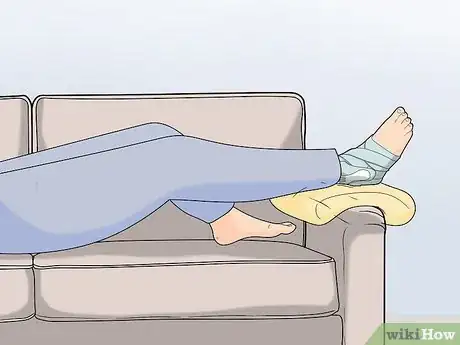

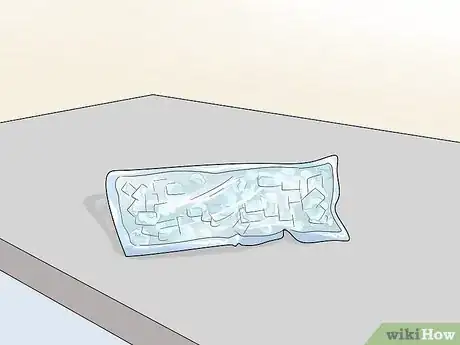
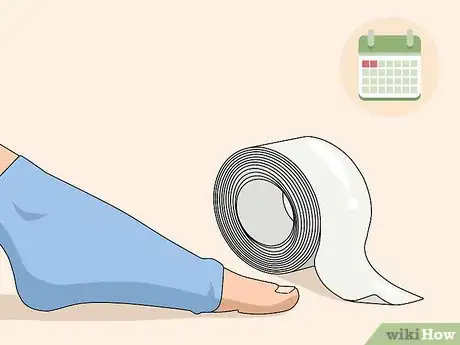
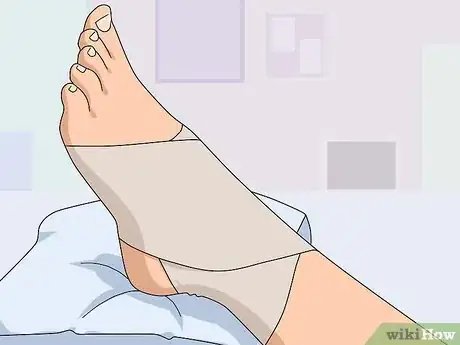
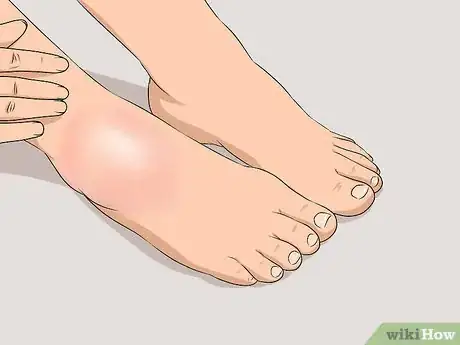

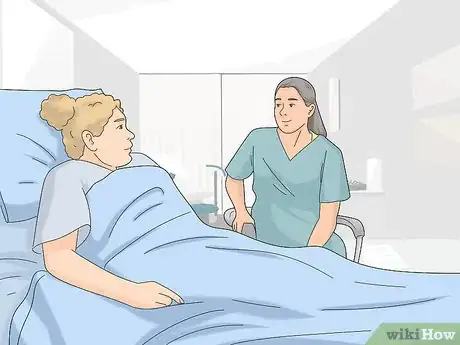
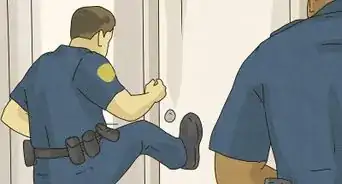

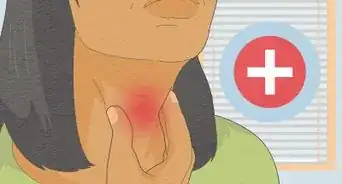
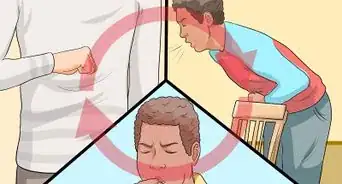

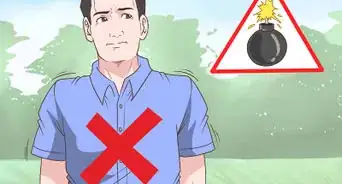



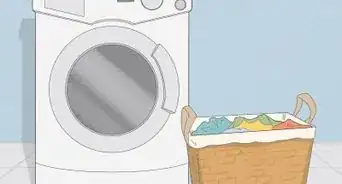

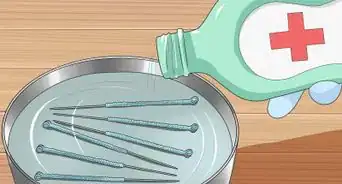







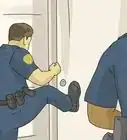

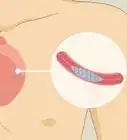
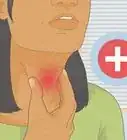




































Medical Disclaimer
The content of this article is not intended to be a substitute for professional medical advice, examination, diagnosis, or treatment. You should always contact your doctor or other qualified healthcare professional before starting, changing, or stopping any kind of health treatment.
Read More...